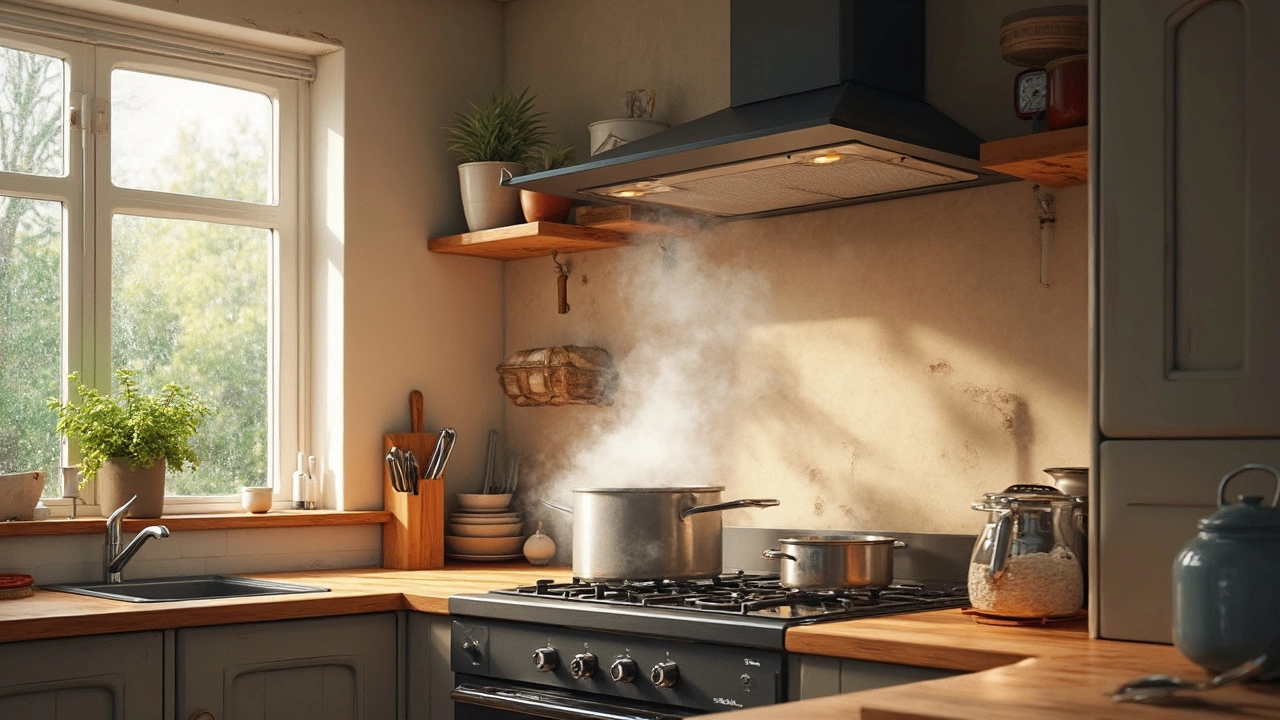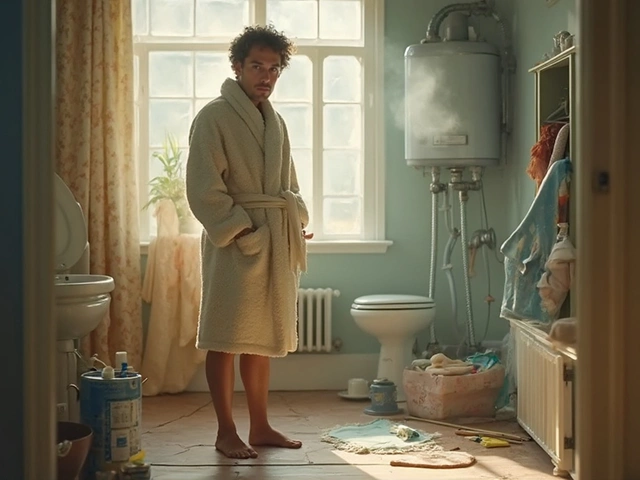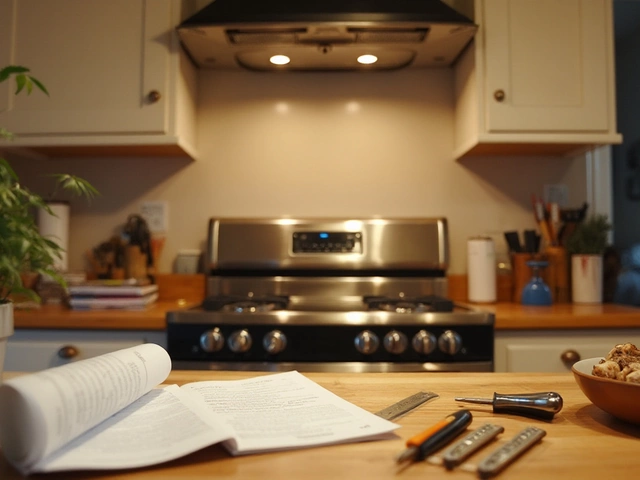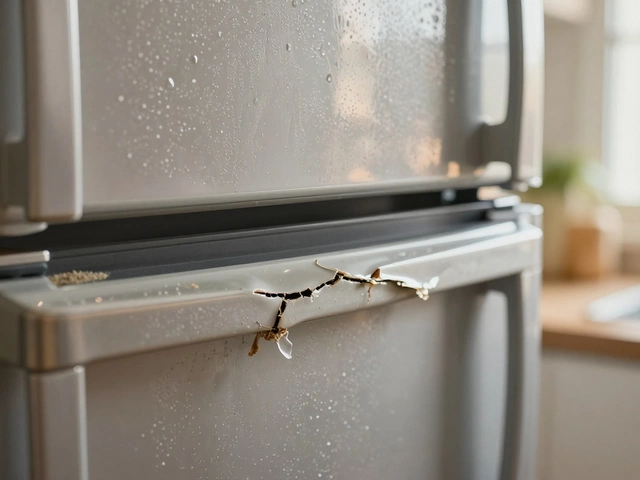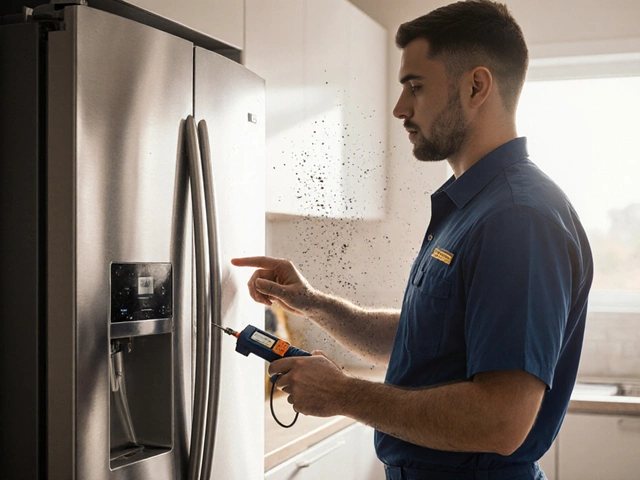If you’ve ever walked into your bathroom after a hot shower and felt like you just entered a rainforest, you probably wondered if something was missing. Yep, that's where an extractor fan comes in. These little guys keep steam and smells from hanging around way too long. But do you always need one? That’s what a lot of folks start asking, especially with older homes or small apartments.
Extractor fans aren’t just about comfort. They’re actually your first shield against mold, rising damp, and that peeling paint above your cooker. It’s not just air that escapes—moisture, smoke, grease, and even some nasty particles all make their way out if your fan is up to the job. And if you skimp on ventilation, you might pay with air that's hard to breathe and repairs that drain your wallet. Let’s get real about why some homes absolutely need an extractor fan, and where you might be able to get by without one.
- Why Houses Need Extractor Fans (or Not)
- Common Problems without an Extractor Fan
- How to Spot a Failing Fan
- Quick Fixes and When to Call for Repair
Why Houses Need Extractor Fans (or Not)
Most houses get pretty steamy in places like the bathroom or kitchen. Showering or cooking sends moisture and particles into the air. If that stuff has nowhere to go, it sits on walls, ceilings, and windows. That’s when you start seeing problems—think mold, peeling paint, and even warped cabinets. The main job of an extractor fan is to send all that extra moisture and gunk outside before it causes trouble.
Now, not every single home legally needs an extractor fan, but in most modern UK builds it’s required by building regs, especially in areas that get damp or smelly. That includes bathrooms, utility rooms, and kitchens. In places like the US, rules are almost as strict in newer homes or rental properties. Older homes might not have one installed, but they often need them the most because their windows and walls don’t offer much natural ventilation.
Ask yourself: do you get condensation on your windows most mornings? Does your mirror fog up for ages? Does your kitchen still smell like last night’s curry by the afternoon? If you’re nodding, your ventilation probably isn’t cutting it. You need something mechanical to boost airflow.
But, there are a few situations where you might get away without an extractor fan:
- You’ve got loads of natural ventilation—big windows you actually open every day while cooking or showering.
- Your house is super dry (like some city apartments with open layouts and low humidity).
- You almost never use the kitchen or bathroom, or only live there part time.
Still, most people just don’t keep windows flung wide open in winter. And let’s be real, modern homes are built tighter, which is great for saving energy but lousy for letting humidity escape naturally. This has made extractor fans less of an option and more of a must if you want to avoid costly repairs and bad indoor air.
| Problem | How Fast It Shows Up | Who’s Affected Most |
|---|---|---|
| Mold growth | 1-2 weeks of high humidity | Kids, folks with asthma/allergies |
| Condensation on windows/walls | Almost immediately after showers/cooking | Everyone in the house |
| Musty smells & lingering odors | Hours to days | Guests, visitors, anyone with a nose |
| Peeling paint & damp patches | A few months | Homeowners dealing with repairs |
So, unless you’re fine with patching up damp spots or fighting mold every year, an extractor fan is worth thinking about. It’s a small investment for a more comfortable (and way less smelly) home.
Common Problems without an Extractor Fan
Skip the extractor fan, and your home is pretty much asking for trouble. That fogged-up bathroom mirror? It’s more than just a pain. Every time hot air sticks around, it leaves water behind—water that doesn’t just vanish. Instead, you might notice weird black spots—yep, that’s mold. And it loves to set up camp in damp, stuffy places.
Without a proper way for air to escape, condensation builds up on walls and ceilings. Over time, that can cause paint to bubble or peel, and even damage plaster or drywall. Kitchens really suffer too. All that steam and grease floating around from cooking without an extractor fan? It will settle onto your cabinets, walls, and even your ceiling, turning cleaning into a never-ending job.
If you or anyone in your family has allergies or asthma, poor ventilation can make breathing harder. Bad air means more dust mites, a spike in mold spores, and generally stuffy, stale air. The World Health Organization actually found that homes with damp and mold have up to a 50% higher risk of respiratory problems for the people living in them.
- Paint or wallpaper peeling in bathrooms or kitchens
- Mold and mildew showing up on walls, especially in corners
- Lingering cooking odors that just won’t go away
- Windows fogging up regularly
- Worsening allergies or more coughing indoors
Here’s a look at just how quickly stuff can go downhill without an extractor fan:
| Time Without Fan | Potential Issue | Cost to Fix (Average UK 2024) |
|---|---|---|
| 1-3 months | Condensation/fogged mirrors and windows | £0 - simple wipe down |
| 3-6 months | Mold spots appearing | £100 - £250 (professional clean-up) |
| 1 year | Damaged paint & plaster, stronger odors | £200 - £600 (repairs + redecoration) |
So, skipping out on an extractor fan doesn’t just mean a steamy mirror—it could mean shelling out a lot more for repairs and making your home less healthy, too. Not exactly the savings you thought you’d get, right?

How to Spot a Failing Fan
A faulty extractor fan isn’t always obvious at first. It doesn’t usually stop working overnight. More often, there are warning signs most people just brush off until steam starts lingering or paint peels off the wall. Knowing what to watch for can save you money and cut down on big repairs down the line.
Here are dead giveaways your extractor fan is on the way out:
- Extractor fan sounds louder than usual, or rattles and squeaks—those extra noises rarely mean good news. That’s usually a sign bearings, blades, or the motor could be struggling.
- Steam hangs around after a shower or while cooking, fogging up windows and mirrors for ages. If airing out takes longer now, your fan isn’t pulling its weight.
- Vents and covers gather dust or greasy buildup more than usual. That’s a hint the fan isn’t pulling air through like it should and stuff’s collecting instead.
- Odd smells—think damp, must, or leftover cooking aromas—refusing to leave. Extractor fans are supposed to take those smells outside, not keep them trapped.
- Visible damp, peeling, or staining near the vent, ceiling, or window sill. That’s moisture skipping the exit and hanging around your walls.
If you want a quick check, hold a piece of toilet paper up to your extractor fan grille when it’s on. It should stick—if not, airflow is weak or blocked.
| Warning Sign | Common Cause | DIY Fix? |
|---|---|---|
| Loud/Rattling Noise | Loose parts, worn bearings | Tighten screws, clean, or call a pro |
| No Air Extraction | Blocked vents or dead motor | Clean grille, check wiring, or replace |
| Excess Moisture | Weak fan power, backdraft | Upgrade fan, clear ducts |
| Burning Smell | Overheating motor | Power off and call a repair service—right away |
Most fans need a solid clean every few months, especially in kitchens. Clogged fans don’t move air well, and grease combined with dust makes them even less effective. Taking a minute to vacuum the vent and wipe down the cover can help, but if you notice wiring issues or things just don’t run at all, it’s best to stop fiddling and call a repair pro. Better safe than sorry.
Quick Fixes and When to Call for Repair
Extractor fans are usually pretty sturdy, but when they act up, it’s obvious. If yours is buzzing like a wasp or barely pulling air, don’t panic yet. Most of the time, the problem is something simple—and you can often sort it out with a bit of basic DIY. If you’re handy with a screwdriver, you’ve already got an advantage.
- Clean it up: Dust and gunk collect inside the fan over time. Just pop off the cover (make sure the mains are off), and clean out the blades with a dry brush or even a vacuum. Sometimes, that’s all it takes to get it working again.
- Check the fuse: Extractor fans often have a fused spur or are on the lighting circuit. A blown fuse is a common reason they stop working.
- Tighten up loose bits: If your fan is rattling, the screws holding it in place might just be loose. Tighten them and see if the noise settles down.
- Replace the cover: If airflow is weak but the motor is running, the vent cover on the outside wall might be clogged or jammed. Look for leaves, dirt, or even critters.
But here’s the deal—sometimes, you’ve done all you can and things still aren’t right. If your extractor fan smells like burnt plastic, refuses to spin at all, or makes horrible grinding noises even after cleaning, that’s your clue to call a professional. Water leaks, sparking, or circuits tripping are all red flags—don’t try to fix those yourself.
To put it in perspective, here’s a quick table on what’s a DIY fix and when it’s best to get help:
| Problem | DIY | Call for Repair |
|---|---|---|
| Dust buildup / weak fan | ✔️ | |
| Fan won't turn on (after fuse check) | ✔️ | |
| Strange noises (rattling) | ✔️ | |
| Burning smell or sparks | ✔️ | |
| Water leaks from fan | ✔️ | |
| Low airflow after cleaning | ✔️ | ✔️ (if still faulty) |
If you keep having the same issue every few months, that’s a warning sign too. Most home extractor fans last about 6-10 years, but the cheap ones can start packing it in at 3-5. A good repair tech won’t just swap parts; they’ll check for faulty wiring, blocked ducts, or bigger ventilation problems that could mess with your whole house.

